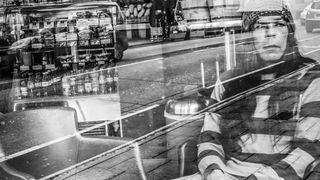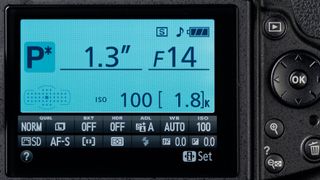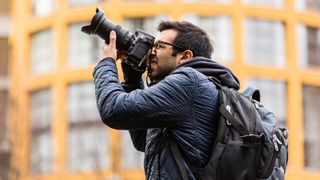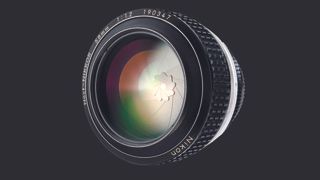Street photography: 10 top tips to help you get your best-ever shots
Make the most of the city with your camera

Fantastic street photographs are readily available in every public space, but over-familiarity with our environment means we often miss out on special moments and scenes unfolding in front of us.
These street photography tips will help you see those decisive moments and learn to trust your instincts. Once you've picked up the confidence to get close to your subjects and you'll be able to use your camera as a mirror of society and come away with unreal, witty and dramatic-looking shots.
1. Camera settings for street photography

For capturing the fleeting moments when shooting candids and street scenes, you need to be ready to shoot in a wide range of situations and conditions.
Program mode, where the camera sets both shutter speed and aperture automatically, is a good mode to choose, but it doesn't offer any control over these settings.
On most DSLRs and mirrorless cameras (and some high-end compacts as well) you can access Program AE (also known as Program AE) by turning the main input dial. This will give you some control over the shutter speed and aperture that the camera will use.
So, if you are shooting a candid portrait and want to use a faster shutter speed to freeze any movement, turn the input dial to change both the shutter speed and aperture.
The main advantage of this over Shutter Priority is that the camera won't allow you to select a shutter speed that's too fast to correctly expose the scene at the maximum aperture of the lens.
Get daily insight, inspiration and deals in your inbox
Get the hottest deals available in your inbox plus news, reviews, opinion, analysis and more from the TechRadar team.
- Learn more: The A to Z of Photography: Program AE
2. Location planning
Before you take to the streets, however, a little location planning is essential. The two main considerations are: is it safe? And is it legal to shoot there? Under UK law, with just a few exceptions you’re within your rights to photograph street scenes as long as you stick to publicly owned streets and places (although you should note that the rules can change if you have a tripod).
On private land, you can be asked to move on unless you get permission from the owner beforehand. Be aware that many places that you might think are publicly owned, such as parks and shopping centres, could in fact be private land.
3. Taking pictures of people on the street

As for taking pictures of people in public, again with a few exceptions, this is perfectly legal. But bear in mind that if you persist in taking photos of someone who doesn’t want their picture taken, it can be seen as harassment. The best approach is to exercise common sense, and do your research.
4. What to do when confronted
Know your legal rights and if necessary, be prepared to argue your case against ill-informed jobsworths. If you get into a confrontation, a friendly manner goes a long way. Explain why you’re there and what you’re doing, and if you have them, hand out business cards or direct people to your website. Think about what to bring, and what to leave behind.
5. Only bring the essentials

Think about what to bring, and what to leave behind. You need to be able to work fast and react to what’s going on around you, so you don’t necessarily want to be carrying around a bagful of lenses. Only bring the essentials. Travelling light will not only allow you to react faster, it’ll also make you less conspicuous.
A shoulder bag is more suitable than a backpack for this kind of assignment. Alternatively, ditch the bag altogether. Sling your camera over your shoulder and just keep a couple of cards and a spare battery in your pocket.
- Learn more: The 10 best camera bags to protect your kit
6. Learn from street photography books and photography websites
The best street photographs are moments, they contain a happening and usually one that, a moment ago, you didn't see coming - that's the difference between street photography and reportage, you're not photographing a 'subject', you're simply out to see what comes your way in the busy change and flux of a public place. Generally, street photographs are self-contained.
It's the humour, a narrative or some drama that makes them work without the presence of other images - they're one-offs. Look at a lot of good street photography in books and on the web. See why the pictures work. See how the photographer made the joke or framed the moment. See what devices photographers have used on the street.
7. Always carry your camera

Most street photographs are made during the course of an ordinary day. Of course you can go to the city to specifically shoot street images, but the number one rule is to carry your camera at all times, always be ready to make a picture... this improves your luck vastly.
8. The best time for street photography
The moment is always paramount, good light can add or detract from it but it rarely 'makes' the picture in itself. Be more concerned with the quantity of light than quality of light because you'll need upwards of 1/250 sec and a decent bit of depth of field in order to freeze subjects. Having said that, the morning and evening are particularly nice times to shoot, especially in the summer months.
9. Street photography in crowded places
Put yourself in a place where there are plenty of people about and you should be able to make a good street picture at pretty much any moment. You'll develop a sense of whether a particular place is going to deliver or not - it's a bit like getting a few bites when you're fishing. If there's a buzz, then hang around. The trick is to maintain your focus and concentration and not let a photographic trip turn into a shopping or drinking excursion.
10. What type of lens is best to use for street photography

Using a long lens isn't a good option as it isolates a subject from its environment and produces a very different type of shot to traditional street photography. Many interesting situations in the street involve more than one or two subjects, so that should be a major consideration when deciding how much of a scene you include in your pictures.
Long-lens shots don't allow for a wider, more intimate viewpoint, and the vast majority of memorable street work has been shot with lenses between 28mm and 50mm.
- Learn more: 9 things you should know about prime lenses
